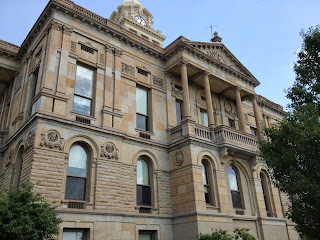FamilySearch is wrapping up a
banner year of digitizing genealogical records. They’ve made significant
additions to their six Ohio vital records databases in 2013:
The result is that you’re
more likely than ever before to find either a reference to your ancestor’s Ohio birth, marriage, or death record or an actual image of it online. That’s great news. But what if you
think a record should be in one of these
databases, but it isn’t? Maybe you’re almost positive your
great-great-grandparents got married in Knox County, Ohio, in the 1870s, but
can’t find any mention of their record in either of the marriage databases.
Well, the adage that it’s not
all online is true. Not all records have been microfilmed, not all those microfilmed
have been indexed, and not all those indexed have been digitized. So how do you
know what is and isn’t included in the Ohio birth, marriage, and death databases? It takes a little
digging, but you can find a coverage chart for at least some of them. Go to “Ohio, Deaths and Burials, 1854-1997” and
click on “Learn More” under the description. Scroll down to where it says
“Coverage Table” and click on the link for the Wiki article. Or click on this
direct link to the FamilySearch Ohio historical records coverage table.
Here’s a snippet of what
you’ll see:
Once you click through, you'll see the chart shows that no Knox
County records are included in the “Ohio Marriages, 1800-1958” database. Now
you know that you’ll need to find another way to access your
great-great-grandparents’ record, either on microfilm or by contacting the county
Probate Court. But keep checking back to the Ohio birth, death, and marriage databases listed above
in 2014, because FamilySearch is continually adding to its collections, and the
chart may not be updated to reflect new additions. In this brave new world of
online accessibility, the record you’ve been waiting for might appear one day!
--Shelley


No comments:
Post a Comment
Thank you for reading my blog! I welcome and appreciate your comments.